Bohemian National Cemetery
|
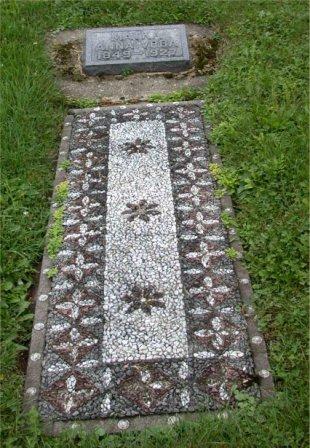
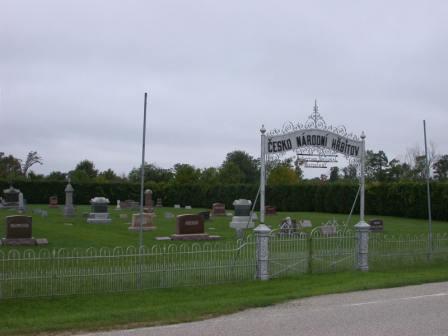
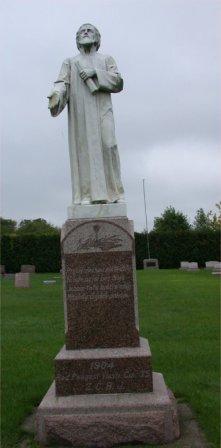
|
|
The land for this cemetery was donated in 1897 by Joseph Vopova. The people buried here came mostly from Bohemia and Moravia and were Freethinkers. There is a statue of Johann Hus, honoring the Bohemian religious reformer who was executed in 1415. Some of the gravesites are covered with beautiful mosaic
blankets made with tiny colored stones (see photo at left).
|
|
Big Canoe Norwegian Methodist Church Site and Cemetery
|
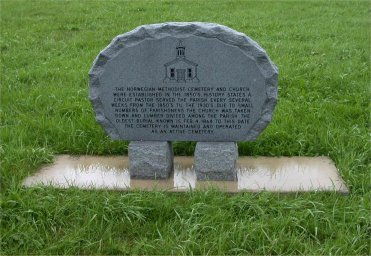
|
Located about a mile south of Highlandville on County Road A26, east of the Big Canoe Lutheran Church and cemetery.
|
Martin Bouska Log School
This log school was built by Martin Bouska in 1853 about one mile east of Spillville. He was one of the first Czech schoolteachers in America. He taught in the left
side of the log building and his family lived in the right side 1853-1866. Martin and wife Katrina were among the first 20 Czech settlers in the Spillville area. The building was restored in 1994 and moved to the Bily Brothers Clock Museum campus.
|
Dunning's Spring
|
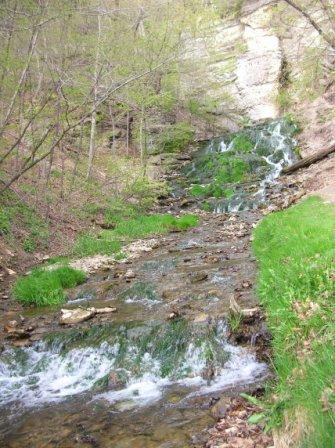
|
|
Dunning Springs is a city park and the site of the first mill built in the county seat. A boulder near the stream marks
the spot where William Painter built a grist mill in 1849. By 1861, E.C. Dunning owned the property and replaced the original mill. Usage changed through the
years. The structure was torn down in 1897.
|
The Huber Cabin
|
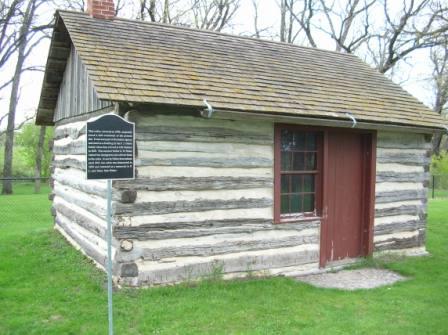
|
|
This log cabin was once located on the Indian Agency at Old Mission. It was located about 1 mile south of its present location at the site of the St.
Anthony of Padua church. The F.J. Huber family lived in it when they arrived in Winneshiek County ca 1849. The building had at one time been used as a post
office and is considered one of the oldest buildings in Winneshiek County.
|
Kittleson Barn
|
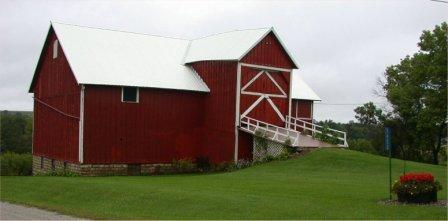
|
|
This frame board and batton barn has a dressed stone foundation with an enclosed ramp on the north elevation. The first owner of the
property where the barn is located was Joren Brunvold from Nesbyen, Hallingdal, Norway. It is believed that he came to Winneshiek County in 1848. The barn
is located on private property in Highlandville Township.
|
Kinney Octagon Barn National Register (no photo)
This barn is one of 14 octagon barns, built in the 1800s, still known to exist on an Iowa farm. The non-self-supporting modified hip roof specifically
characterizes it as a Coffin type, most likely influenced by the Webster County barn of Lorenzo S. Coffin. Other identifying features include
heavy timber construction, rectangular plan and general-purpose function. Coffin, a stockbreeder and farm editor of the Fort Dodge Messenger, is credited
with building the first round barn in Iowa in 1867. Octagon barns were uncommon and considered experimental in their day. The Kinney Barn is located on private
property.
|
Hutchinson Barn
2299 Scenic River Road, Decorah
(All-State Barn Tour)
|
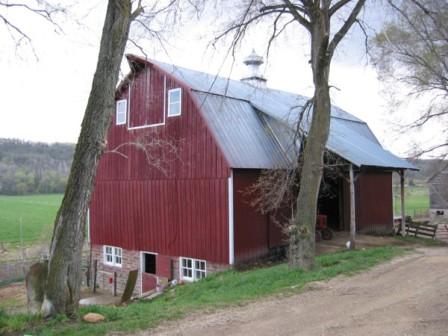
|
|
The Hutchinson farm has been in the family for 100 years. The barn was built in 1929. The photo of the barn after restoration (below) was taken by Michael McConnell.
|
Gribble Barn
3109 155th Street, Fort Atkinson (All-State Barn Tour)
|

|
|
Original owners (1855) were Mary and Joseph Puffer. Their son Michael and wife Rose Puffer, built the wooden barn and six surrounding
buildings from 1900-1905. The Prague-born Puffers raised Brown Swiss, known for their "rich cream". Community dances were held in the barn. Sherry Puffer
Gribble, great granddaughter of the original owners, and her husband, Dale, meticulously restored the barn and farm. The photo of the barn after restoration
was taken by Clair Carolon who painted the barn after restoration was complete.
|
Locust School (National Register)
|
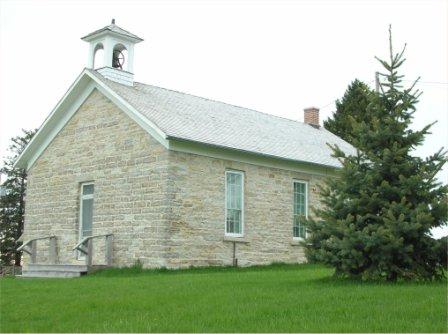
|
|
This one-room limestone school, built in 1854, is one of the oldest school buildings in the state. The architecture is
typical of early Iowa settlement periods. The school has been restored and is occasionally open to the public.
|
Springwater Mill
|

|
|
A grist mill was built on Canoe Creek in 1851-52 by G.V. Puntney for Beard and Cutler. The mill stones were shipped by boat from Galena, Ill. to Lansing, Iowa
and on to the mill site by boat. In 1893, iron rollers replaced the stone buhrs. The mill stone above is on display at the Springwater Quaker Cemetery after being
donated to the Winneshiek County Historical Society.
|
St. Wenceslaus Church
|

|
|
This church in Spillville was designed and built by Czech settlers in 1860 and is the oldest Czech Catholic church in North America. Czech
composer Anton Dvorak played the organ at the church when he spent the summer of 1893 in Spillville. Many of the ornate cast iron grave markers in the old part
of the cemetery were made by Charles Andera.
|
Washington Prairie Lutheran Church
|
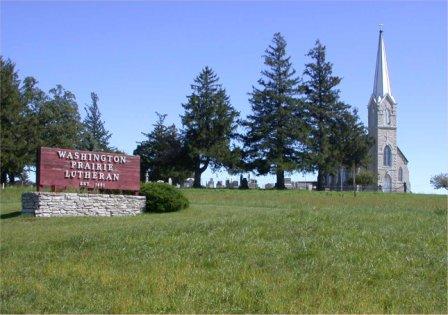
|
|
This stone church represents one of the early Norwegian settlement churches in the county. It began as a branch of the Little Iowa Parish organized by U.V. Koren and
Nils Brandt, early pioneer ministers.
|
Washington Prairie Norwegian Methodist Church (National Register)
|
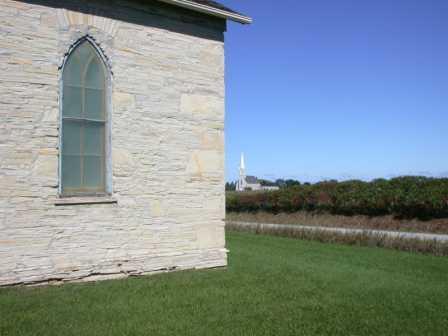 |
|
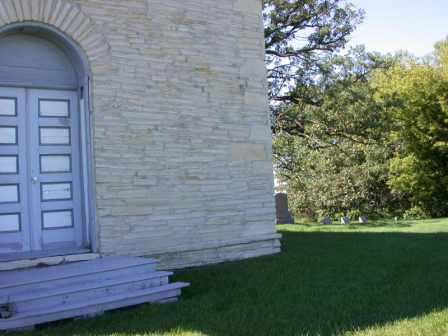 |
|
This view from the Washington
Prairie Norwegian Methodist Church shows the Washington Prairie Lutheran Church
a short distance away to the northeast. |
|
The Washington Prairie
Norwegian Methodist church, located on County Road W42, is surrounded on three sides by graves marking
the lives of its members. |
This limestone church, built ca 1865, is considered the mother church of Methodism
in Norway. Ole Peter Petersen first established this church and later
returned to his native Norway where he established the first Methodist congregation
in that country.
Please contact the
county coordinator
to submit additions or corrections.
Winneshiek IAGenWeb Home * History Index
Copyright IAGenWeb 2024
IAGenWeb terms, conditions & disclaimer applies to the Winneshiek County website.
|










